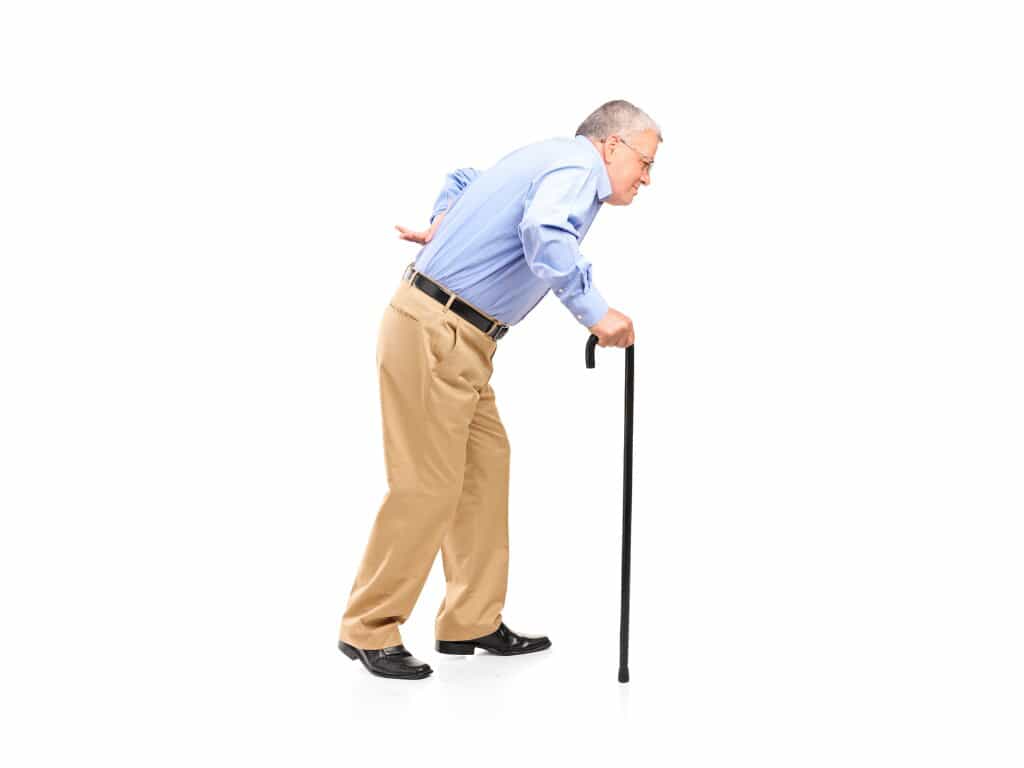Low Back Pain
- Category: Wellness

What Is Low Back Pain?
Approximately 80 percent of Americans will have at least one bout with back pain during their lifetimes, according to the American Association of Orthopaedic Surgeons.1 In fact, Americans see their doctors for low back pain more than any other reason except the common cold and flu.2
Symptoms Of Low Back Pain
Pain in the lower back can originate from various places: the spine, muscles, nerves or other structures in the low back. The pain may feel like a tingling or burning sensation, a dull aching, or a sharp pain, and it often comes with muscle spasms and stiffness near the spine and sometimes with weakness in the legs or feet.
Low back pain can be acute or chronic. Acute pain is temporary, lasting less than a month. Chronic pain lasts longer than three months and often is continuous.2
Causes Of Low Back Pain
The causes of low back pain are numerous and range from the extreme, like lifting a heavy object or being involved in an accident, to the very ordinary, like moving too quickly or sitting too long in one position. A number of medical conditions contribute to low back pain, such as:
- Small fractures to the spine from osteoporosis
- Muscle spasms (very tense muscles that remain contracted)
- Ruptured, herniated, or degenerating disc
- Poor alignment of the vertebrae
- Spinal stenosis (narrowing of the spinal canal)
- Strains or tears of the muscles or ligaments that support the back
- Curvature of the spine and other medical conditions2
Diagnosing Low Back Pain
To evaluate a person’s pain condition, a physician will usually gather a thorough medical history and perform a general physical exam. The doctor also may conduct various diagnostic tests, such as neurological tests, blood tests and imaging tests. Other tests may be performed, depending on the particular condition, including discography, computerized tomography, magnetic resonance imaging (MRI), electrodiagnostic procedures, bone scans, thermography and ultrasound imaging.3
Treating Low Back Pain
Various treatments for low back pain are used and often begin with the application of ice and heat. Medications also may be administered in conjunction with other therapies. Aspirin, naproxen and ibuprofen may reduce the swelling and inflammation enough so that the back can heal. For more intense pain conditions, prescription medicines like anticonvulsants, antidepressants or opioids may be used. In addition, patients may be scheduled for physical therapy, electrical stimulation of the painful nerve or pain counseling.3
If these methods are unsuccessful, physicians may recommend another level of treatment, such as injections to relieve the pain or to destroy a nerve. Other possible therapies involve freezing or heating the nerve so it cannot transmit pain signals. Advanced treatments can include neurostimulation, which involves implanting a device that uses mild electrical pulses to block pain messages before they reach the brain.
According to the National Institute of Neurological Disorders and Stroke (NINDS), surgery is a last resort: “In the most serious cases, when the condition does not respond to other therapies, surgery may relieve pain caused by back problems or serious musculoskeletal injuries.” However, the institute states, “It may be months following surgery before the patient is fully healed, and he or she may suffer permanent loss of flexibility. Since invasive back surgery is not always successful, it should be performed only in patients with progressive neurologic disease or damage to the peripheral nerves.”3
Cost Of Low Back Pain
Findings published in 2006 indicate that the total cost of low back pain in America was more than $100 billion per year, including both direct and indirect costs. Direct costs included medications, hospitalizations and outpatient visits, while indirect costs included lost wages, decreased productivity and the expenses of caregivers. The research also showed that fewer than 5 percent of patients with low back pain account for 75 percent of the costs.4
Patient Resources
People who think they might be suffering from low back pain should talk with their physicians or other healthcare providers about their symptoms. Information on how to locate a physician who treats pain can be found at the National Institute of Neurological Disorders and Stroke (www.ninds.nih.gov).
Sources For Statistics And Additional Information For Patients And Journalists:
Linked website disclaimer
Some linked websites listed are not managed or monitored by St. Jude Medical, Inc. and are provided and linked only for the convenience of our visitors. St. Jude Medical makes no representation regarding the information presented on any off-site, linked pages or any other sites linked to our site or any such site’s compliance with applicable laws and regulations. St. Jude Medical shall not be responsible or liable for any damage or loss caused or alleged to be caused by or in connection with use of or reliance on any such content or goods or services available through any such site.
Sources:
- Katz JN. Lumbar disc disorders and low-back pain: socioeconomic factors and consequences [abstract]. J Bone Joint Surg Am. 2006 Apr;88 Suppl 2:21-4. Taken from: PubMed. Available at: http://www.ncbi.nlm.nih.gov/entrez/query.fcgi?cmd=Retrieve&db=PubMed&list_uids=16595438&dopt=Abstract. Accessed April 3, 2007.
